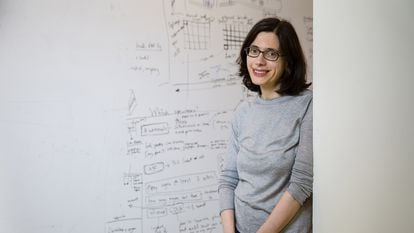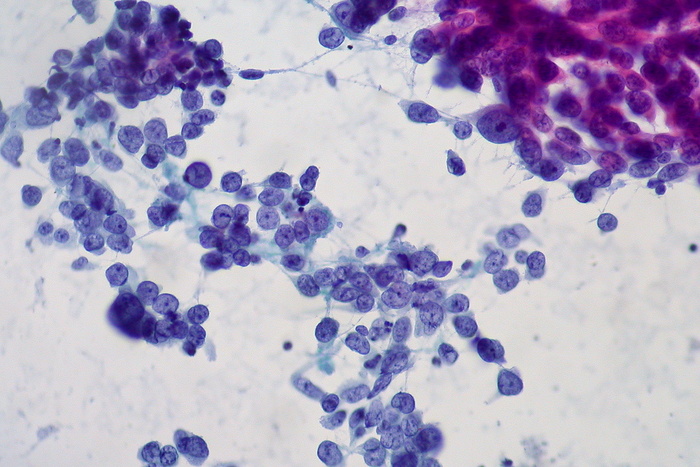In the latest version of the Human Cells Atlas, two thousand researchers in 83 countries have defined, one by one, some 60 million cells.
“Our mission is to create a map of all human cells,” says Israeli biologist Avi Regev, who began the project in 2016 and leads the international consortium together with the German biologist Sarah Teichmann, from the Wellcome Sanger Institute (Cambridge, UK).
Regev, who is on leave from the Massachusetts Institute of Technology and has a management position at US biotech company Genentech, says he believes the cross-continental team is “halfway” to its goal.
While children study some examples of cells at school such as neurons, red blood cells, white blood cells, and platelets, “nobody knows” how many types there really are, explains the scientist.
“We didn't know how many genes we had until the Human Genome Project.
This is a similar case,” he says.
The Human Cells Atlas aims to catalog all cell types and their multiple subtypes, but also to locate them precisely in the human body and have a picture of the exact composition of each organ: what we are made of and why diseases arise.
Spanish immunologist Cecilia Domínguez Conde is among the main authors of the latest version, which was reported last week in the journal Science.
The researchers describe the detailed profile of more than a million cells;
presenting cross-referenced data from 33 organs of the human body, such as the heart, skin and lungs.
Two T lymphocytes (in red) attack a cancer cell (in white). NIH
Domínguez Conde's team is based at the Wellcome Sanger Institute, and has focused on the cells of the immune system.
“We have discovered how cells adapt to different environments,” says the immunologist, who will begin leading her own laboratory at the Human Technopole, a new research center in Milan (Italy), in June.
“The diversity of cell types within the immune system is absolutely incredible,” says Domínguez Conde, adding that the work had previously focused on the blood circulating in the body, while now, “we study the cells in different tissues and we see new mechanisms .”
The immunologist notes that there is a new generation of cancer treatments, the so-called CAR-T, in which white T lymphocyte blood cells are extracted from the patient.
Then, using genetic engineering, they are redesigned in the laboratory to increase their ability to destroy cancer cells.
Biology textbooks have traditionally spoken of about 300 cell types in the human body, but the authors of the atlas have found 500 types in the last million cells analyzed.
Understanding this astonishing diversity will make it possible to improve vaccines, increase the efficacy of antitumor therapies, facilitate regenerative medicine and develop new treatments for rare and common diseases, according to biologist Aviv Regev, who now has a management position at US biotech company Genentech.
Israeli biologist Aviv Regev, co-director of the Atlas of Human Cells.MIT
While biology textbooks usually teach that there are about 300 cell types in the human body, the authors of the Human Cell Atlas have now found some 500 types.
This new understanding, says Aviv Regev, will contribute to improving vaccines and antitumor therapies as well as regenerative medicine and new treatments for both rare and common diseases.
A mutation in a gene can cause a disease, but although all cells share the same DNA, the problem will only appear in cells that have that particular gene activated.
"We have found many unexpected cells that have active disease-associated genes," says Regev.
“For example, we have observed non-muscle cells in muscle tissue expressing genes that cause rare muscle diseases.”
“This is important, because if we want to develop treatments we need to know the cells in order to target them,” explains the biologist.
Regev also highlights possible applications of these findings to regenerative medicine, a specialization that tries to rebuild damaged organs using new cells.
“To get it right, we need to generate cells with the right properties.
The atlas is a reference to ensure that the cells generated in the laboratory have the desired characteristics,” he says.
Neuroscientist Rafael Yuste, professor at Columbia University (USA), applauds the latest version of the atlas.
“This batch of results is historical.
It is one of the first salvos of what will be a torrent of studies in the next decade that will classify all cell types in the body”, says Yuste, who has not participated in the investigations for the atlas.
The Spanish neuroscientist was the founder of BRAIN, a billion-dollar project sponsored in 2013 by the then US president, Barack Obama, to obtain a map of the human brain.
Yuste is optimistic.
The new technologies, called transcriptomics, allow cells to be placed in narrow channels and trapped one by one in oily droplets, analyzing their active genes in a manner that is fast, automated and cheap.
“The first steps of this strategy have been spectacular.
For example, in the United States, the Allen Institute of Brain Sciences has classified all the cells in a part of the cerebral cortex of the mouse, generating for the first time a list of all the types of neurons in an area of the brain” says Yuste, who has collaborated on that project.
Yuste recalls how the father of neuroscience, Santiago Ramón y Cajal, discovered in 1888, using a rudimentary microscope, that neurons were individual cells.
Now, says Yuste, it is a giant consortia like his BRAIN initiative and the Human Cell Atlas doing this work.
“It is a huge effort,” says the professor.
“It will have a fundamental impact on science and medicine, since, in the end, everything that the brain, or the body, does, is cooked up between cell types.”






